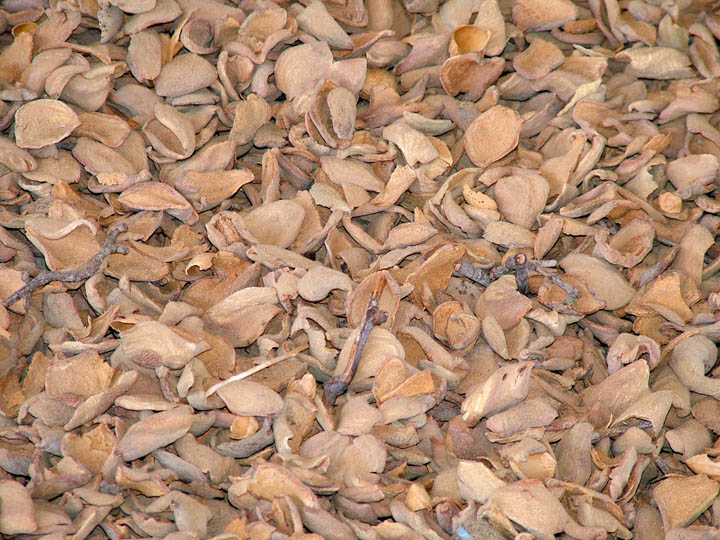
This California almond season will not only be another record crop, but the eighth billion-pound crop in the last nine seasons.Prices are up once again as sales continue to increase an average of 10 percent to 15 percent each season.1.65 billion pounds forecast.1 billon pounds or more produced in eight of last nine years.
November 15, 2010

California’s almond industry has become one broken record after another. Growers, huller/shellers and marketers could not be happier.
This season will not only be another record crop, but the eighth billion-pound crop in the last nine seasons. More importantly, prices are up once again as sales continue to increase, averaging 10 percent to 15 percent each season. This annually drops carry-ins from one year to the next.
For this year, the carry-in was down 22 percent on Aug. 1, 2010 from the year before. Total shipments through Oct. 31 were up more than 9 percent; domestic shipments up more than 13 percent; export up almost 8 percent.
Central California Almond Growers Association (CCAGA), the largest almond huller/sheller in the world, added another record to the string of industry records.
On Nov. 2, CCAGA shelled more than 1 million pounds through the company’s three almond shellers near Kerman and a single facility in Sanger. All plants working shelled 1,018,724 pounds of almond meat in a 24-hour period. This is the first time any almond shelling organization in the world has “cracked-out” 1 million pounds in a 24-hour period. Not to stop there, this feat was repeated for the following two days as well, as crews scheduled extremely long runs of clean and dry product to achieve this record.
“We have strived for a long time to make this happen and our entire staff deserves a heartfelt thanks, not only for the job they have done over those three days but for the entire season, which has been highly productive,” said Jim Sears, the association’s chief operating officer.
Association President and CEO Michael Kelley remarked, “The efficient feeding of all of our shellers with ideal product is essential to achieving high volumes, and in our industry volume is everything. It helps keep costs as low as possible in our highly competitive and regulatory environment.”
Kelley said the association took delivery on about 77.5 million meat pounds this season produced by its 481 members from 47,300 acres of almonds.
Kelley was surprised deliveries were up 13 percent from last season. “Turnouts were spectacular this season,” Kelley said. Quality is excellent and the crop proved to be “extremely uniform.” It was a surprisingly dry shelling year, he added.
“Nonpareil deliveries were the same as last year, but the pollinators exceeded last year,” said Kelley. The pollinators were up 24 percent over last year.
“It surprised me. Nonpareils were supposed to be off 10 to 15 percent because of the bad spring pollination weather.
“It befuddles me. I consider myself very good at estimating yields. I was wrong, and that is a pleasant surprise,” Kelley laughed.
The reason, Kelley surmises, is orchards on the West Side of the San Joaquin Valley yielded better than expected.
“There were some serious weather problems early on the East Side and central corridor of the Valley.
There were isolated freeze issues and pollination weather was poor,” said Kelley.
“The only thing I can think of that made a difference in West Side orchards is that there were more heat units on that side of the Valley and less rain.”
Almond prices in the wake of a record crop forecast are good; above $2 per pound for Nonpareils and pollinators at about $1.65.
Hull prices are also coming up.
Kelley, however, does not see another spike in almond plantings, despite a good 2010 season.
“I think you will see more interest in other crops, like cotton and other shorter season crops,” Kelley said. There is also growing interest in planting pistachios and pomegranates and Kelley believes that will temper any wild speculative planting push for almonds This along with continued interest in planting other permanent crops like pistachio and pomegranates will likely temper extensive new almond plantings, said Kelley.
About the Author(s)
You May Also Like





